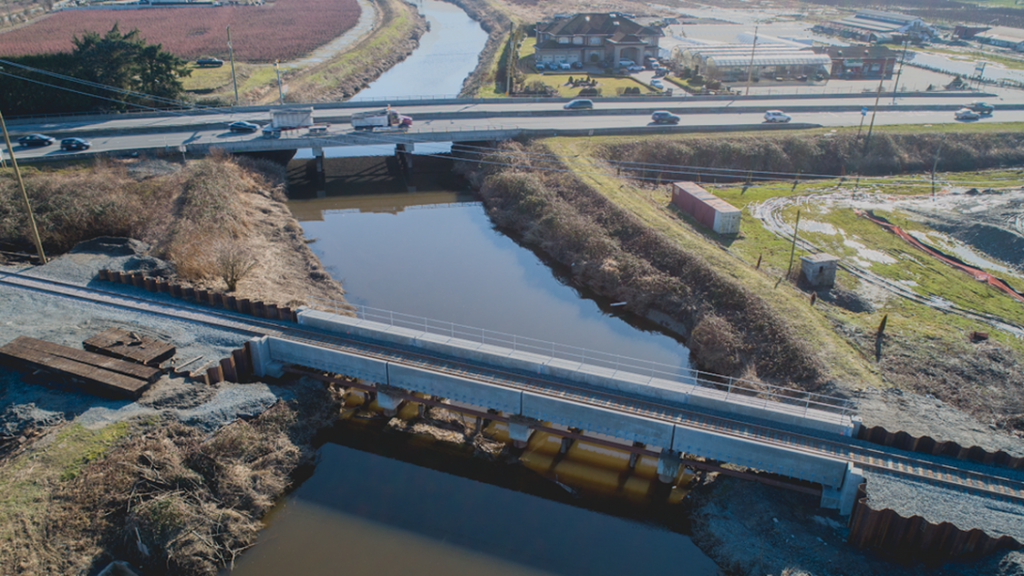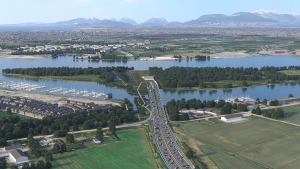SURREY, B.C. — Officials for the City of Surrey announced crews have finished the Serpentine Railway Bridge replacement project, the first of 13 project components to be partially funded through the Government of Canada’s Disaster Mitigation and Adaptation Fund (DMAF).
Last year, the city received $76.6 million in federal funding to pay for a series of projects to reduce Surrey’s coastal flood risk by adapting to sea level rise. Crews started immediately working with Southern Railway of British Columbia to replace the 58-year-old, 40-metre-long timber railway bridge, which engineers found to be at risk for overtopping and damage.
“Our historic investments in infrastructure are helping build communities such as Surrey, and making them more resilient to flooding in a changing climate,” said Catherine McKenna, minister of infrastructure and communities, in a press release. “It’s gratifying to see such concrete progress on Surrey’s multi-year flood resilience plan, and we look forward to continuing to work together to build a better, more prosperous and more resilient British Columbia and Canada.”
Approximately $190 million of freight moves across the Serpentine Rail Bridge each year, providing the region with a key rail connection.
“This new crossing acts as an insurance policy for the movement of goods and the protection of agriculture production in the area,” said Surrey Mayor Doug McCallum. “By investing in infrastructure now, we are protecting our community, economy and environments from future flood risks. We thank the Government of Canada, Southern Railway of British Columbia and the many partners who supported this important project.”
Gerald Linden, president of Southern Railway, stated the benefits from the new Serpentine Railway Bridge will endure for generations.
“We appreciate the City of Surrey’s partnership and we are proud of the many Southern Railway employees who contributed to this achievement,” Linden said.
The Province of British Columbia has instructed municipalities to prepare infrastructure for a metre of sea level rise by 2100 and two metres by 2200. Following a comprehensive planning process and extensive engagement, Surrey finalized its Coastal Food Adaptation Strategy (CFAS) in 2019.
The CFAS outlines Surrey’s plan to increase community resilience, safety and health regarding flooding and climate change for the short and long-term.
Twelve additional project components will be supplemented by DMAF in Surrey, which include dyke and road upgrades, sea dam and bridge replacements, storm sewer upgrades, nature-based solutions and further infrastructure investments. These components will take place over the next eight years, with a completion plan of 2027.











Recent Comments
comments for this post are closed